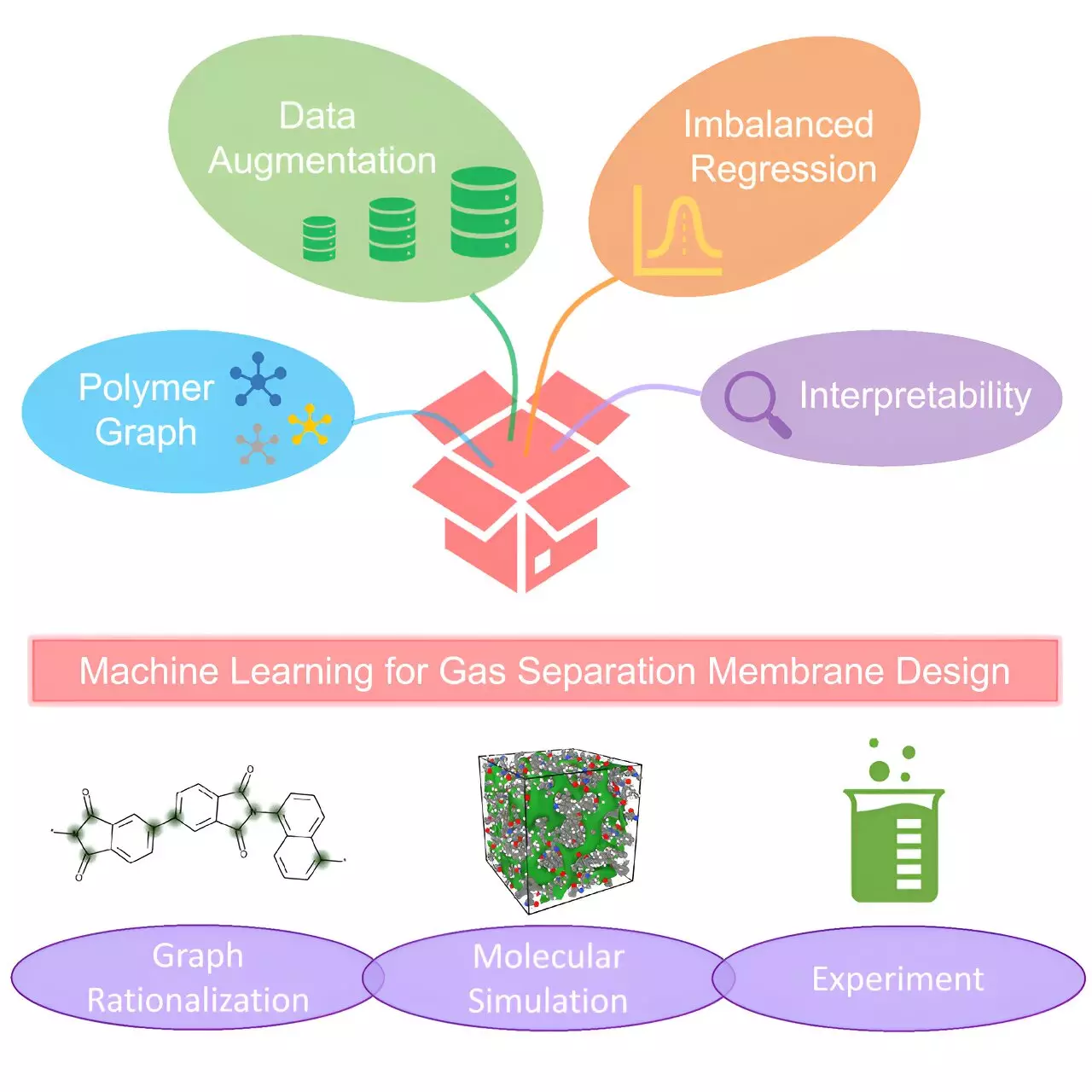Gas separation is a crucial process in both manufacturing and research, but traditional methods come with a hefty environmental cost. The current approaches account for a significant 15% of U.S. energy consumption and result in the production of millions of tons of carbon emissions. Clearly, there is a pressing need for more efficient and sustainable alternatives.
A team of chemical and mechanical engineers, along with computer scientists at the University of Notre Dame, have made significant strides in the field of gas separation. By harnessing the power of graph-based machine learning, they have identified, synthesized, and tested polymer membranes that exhibit up to 6.7 times greater effectiveness than previously developed membranes. This breakthrough research has been detailed in a publication in Cell Reports Physical Science.
According to Agboola Suleiman, a doctoral student in the lab of Ruilan Guo, the performance of a membrane hinges on its microscopic porosity. The ideal membrane material must strike a delicate balance between selectivity and permeability—allowing gases to pass through while effectively blocking others. Through the use of graph neural networks (GNN), the research team was able to pinpoint two polymers that displayed the optimal properties for enhanced gas separation.
Tengfei Luo, the Dorini Family Professor for Energy Studies, highlights the discovery of previously overlooked materials with remarkable gas separation capabilities. The team’s machine learning algorithms led them to polymers that had originally been intended for electronics applications. By synthesizing and testing these materials in the lab, they were able to confirm their superior performance in gas separation, likening the experience to finding hidden gems.
One of the major challenges in synthesizing polymers is the lack of comprehensive data on their molecular structure and chemical properties. However, Meng Jiang and Gang Liu, computer scientists and co-authors on the paper, devised algorithmic innovations that addressed this issue. By leveraging machine learning techniques, the team was able to augment and enhance their existing data, allowing for more accurate predictions and explanations of why certain materials outperformed others.
The top-performing polymers identified by the research team could have far-reaching industrial applications. These membranes have the potential to separate various gas pairs efficiently, making them invaluable in a range of industrial settings. By harnessing the power of machine learning, researchers are paving the way for more sustainable and effective gas separation methods, ultimately contributing to a greener future.


Leave a Reply